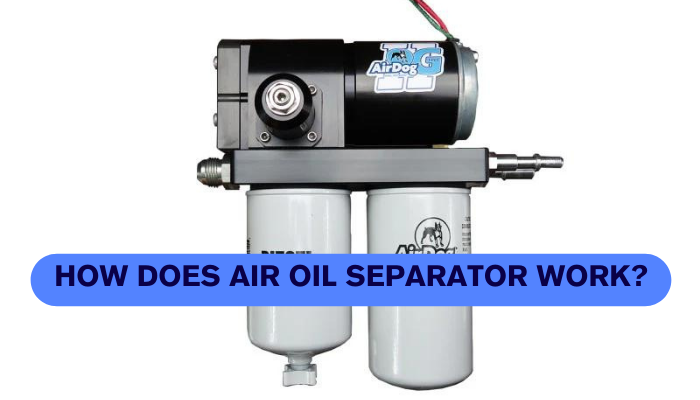
PedalMonster, Throttle Sensitivity Booster, Standalone for many Cadillac, Chevy/GMC, Chrysler, Dodge/Ram, Ford, Jeep, Lincoln, Mazda
$295

PedalMonster, Throttle Sensitivity Booster, Standalone for many Cadillac, Chevy/GMC, Chrysler, Dodge/Ram, Ford, Jeep, Lincoln, Mazda
$295

2869-3T (3-3.5 Turns) 1994-2001 Dodge 1500 or 1994-2002 Dodge 2500-3500 Pickup Trucks Steering Gear
$386

2757 (4 Turns) 1980-1997 Ford Bronco, Explorer, Van, F-Series Pickup Truck, Ranger or Mazda Steering Gear
$296

2864S-LM-3T (3 Turns) 1997-2000 Cadillac Escalade, Chevrolet or GMC Pickup Trucks, Suburban's, Tahoe's or Yukon's Steering Gear
$316

2869-4T (4-4.5 Turns) 1994-2001 Dodge 1500 or 1994-2002 Dodge 2500-3500 Pickup Trucks Steering Gear
$506

FASS TSF17180F140G Titanium Signature Series Diesel Fuel System 180F 140GPH@55PSI Ford Powerstroke 6.7L 2011-2016
$691.55

FASS TSF14180F140G Titanium Signature Series Diesel Fuel System 180F 140GPH@45-50PSI Ford Powerstroke 7.3L and 6.0L 1999-2007
$691.55

Firestone Universal Air Compressor Mounting Bracket (For PN 2097 / 2158 / 2178 / 2219) (WR17602497)
$77.44

Firestone Sport-Rite Air Helper Spring Kit Rear 99-05 Chevy 1500 No HD/97-04 Ford F-150 (W217602320)
$538.89

Heavy Duty MAXXLinks Heavy Duty Sway Bar End Links Extended for 06-18 Ram 4x4 1500 W/ Leveling Kit SuspensionMaxx
$169.99

MAXXstak 1.5 inch/2 inch/2.25 inch/2.5 Inch Leveling Kit for 15-18 GM Half Ton Trucks and SUV's equipped W/ Manetic Ride SuspensionMaxx
$169.95

MAXX Cam 7: 1 inch-2.5 Inch Leveling Kit for 17-20 Silverado/Sierra 2500HD/3500HD SuspensionMaxx
$370.98

Carrier Bearing Lowering Kit 2 Inch Drop 05-16 Ford F-350 Super Duty 05-16 Ford F-250 Super Duty Skyjacker
$76.20

Carrier Bearing Lowering Kit 2.25 Inch Drop 80-99 Ford F-250 80-97 Ford F-350 99-08 Ford F-250 Super Duty 99-08 Ford F-350 Super Duty Skyjacker
$68.23

Carrier Bearing Lowering Kit 1 Inch Drop 80-99 Ford F-250 80- 97 Ford F-350 97 Ford F-250 HD 99-08 Ford F-250 Super Duty 99-08 Ford F-350 Super Duty Skyjacker
$50.45

Cherokee Transfer Case Lowering Kit 94-01 Jeep Cherokee Lowering Height 3 Inch 94-01 Jeep Cherokee Skyjacker
$65.10

How Does Air Oil Separator Work?
Adequate air and oil control is essential for successful operations in the mechanical sector. Knowing air oil separators is crucial in this regard. But how does air oil separator work in a vehicle?
Midwest Aftermarket helps you examine how does air oil separator work and its advantages. You will also learn the procedures involved in separating oil from air.
A Brief Overview of AOS
Before oil is released into the environment or recirculated inside an engine system, it must pass through an air oil separator or oil demister first. This is an explanation of how it works:
Mechanical Filtration
Mechanical filtration is the main mechanism used in air oil separators. The air-oil combination travels through several filters before entering the separator. These filters are made expressly to collect and hold onto oil droplets while letting clean air flow through.
Coalescing Principle
Inside the separator, there are media or coalescing components. These components help the mechanical filters catch the oil droplets more efficiently by combining smaller ones into bigger ones. The process of coalescing, which is based on the surface tension principle, causes oil droplets to clump together to create bigger droplets that are easier to separate from the air.
Gravity Separation
In specific designs, gravity aids the separating process. Gravity causes the oil droplets to naturally settle at the separator's bottom as they combine and become heavier. As a result, extracting the accumulated oil is made more accessible.
Drainage System
Air oil separators are designed with drainage systems to make extracting the separated oil easier. Effective separator draining guarantees that the gathered oil doesn't reenter the air stream.
Buy Truck Accessories here.
The Benefits of Air Oil Separators
The advantages of air oil separators are as follows:
Better Air Quality
In industrial settings, separators help create cleaner air by eliminating oil droplets from the atmosphere. This is especially crucial in situations when air pollution might harm health or impair machinery's functionality.
Extended Equipment Life
Oil pollution can negatively impact the functionality and durability of machinery and equipment. By keeping oil from reaching delicate parts, air oil separators can lower this danger, extending equipment life and requiring less maintenance.
Environmental Protection
Air oil separators contribute to environmental protection and equipment safety. These devices lessen the ecological effect of industrial activities and help avoid pollution by catching oil before it is discharged into the sky.
Buy Aftermarket truck parts here.
How Do You Separate Oil from Air?
Although air oil separators are a valuable tool for separating oil from air, there are alternative techniques used in different contexts:
Cyclonic Separation
This technique separates oil droplets from air using centrifugal force. The combination of air and oil is injected into a chamber and made to spin quickly. Clean air can depart the chamber through the center as the heavier oil droplets are ejected to the chamber's outer walls.
Absorption
In some situations, absorption techniques can be used to extract oil from the air. The air must be passed through the materials or filters to absorb the oil molecules from the air. These materials or filters have a high affinity for oil.
Membrane Filtration
Oil droplets may be physically separated from air using membrane filters with specific pore diameters. Clean air travels through the barrier, while oil droplets are retained according to size.
The Bottom Line
Knowing how does air oil separator work is a crucial skill in various industrial contexts. They preserve the environment, safeguard machinery, and ensure air quality. Make knowledgeable choices about integrating them into your automobiles. Several techniques isolate oil from air, each tailored to particular needs and uses.
- Choosing a selection results in a full page refresh.

Free Shipping
Any amount. All the time. Did we mention its fast too?

Give Us A Call
217-212-5199

Price Match
We will price match any legitimate competitor.

Easy Returns
Changed your mind? Don't install it! We will take it back no problem.

















































































































































































































